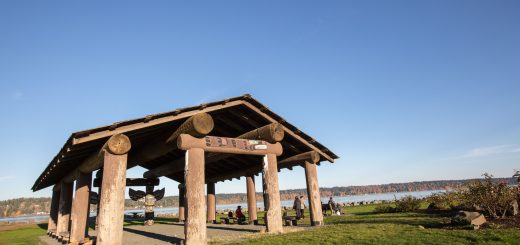Creative Riverite – Gary Ratushniak
Gary Ratushniak was born in 1957 in Campbell River, British Columbia, Canada, a logging and fishing community on the north-eastern coast of Vancouver Island.
From an early age he developed a keen interest in the culture of the indigenous peoples of the area, in particular the Kwakwaka’wakw People of Vancouver Island. As a young man he visited the remote villages along the coastline, listening and learning from the tribal elders the traditional forms of the art and dance associated with the ceremonies of the potlatch. From his experience he co-authored with fellow student Danny Coon, a booklet on northwest coast legends, entitled Bu-Kwum Heritage. It was at this time that he painted and made prints of first nation themes, including shamanic ritual, compiling a large body of work on the topic of dance. In many respects the formal structure and motifs of the Kwakwaka’wakw inform his more recent work.
Later Ratushniak found himself drawn to the forest as a source of inspiration; in this shift he followed the example of Emily Carr whose paintings and writings had provided an early stimulus to his work. He drew now directly from nature, on excursions into the remote corners and along the shores of the island.
Around 1975 a new range of materials and techniques was brought into his artistic range when he began to take private tuition from celebrated printmaker Sybil Andrews. Andrews, a leading figure in the Grosvenor School of printmaking during the pre-war period, had settled on the island after the war. Over a ten-year period Ratushniak studied drawing, painting and printmaking under Andrews, with an emphasis on the techniques of printmaking, and especially the art of the linocut. In the course of this decade a deep friendship grew between the two, and Andrews gave voice to this dedicating her book The Artist’s Kitchen with the words “For Gary Ratushniak, who shared our great discussions”.
Rather than depending on mechanical and block printing, Andrews taught the traditional method of printing by hand, using the back of the handle of a silver spoon to apply pressure. Each print produced this way can take one or even two days to finish, but the method allows the artist to vary the intensity of colour and produce gradations within each outlined area, imbuing printmaking with ‘painterly’ qualities. It is this ‘painterly’ aspect of the tradition which Ratushniak has developed the most intensively, using up to six blocks, increasing the subtlety of shading over time. The transcendent is expressed in his linocuts through an increasingly rich palette and intense application of colour, without sacrificing the gradations of colour made possible by the Grosvenor School technique.
In 1985, with the encouragement and support of Sybil Andrews, Ratushniak arrived in England to study a year at the Heatherley’s School of Fine Art. Since that time he has continued to live and produce paintings, stencils and linocuts in London. London has provided an ongoing subject for his work, where he captures a grace in the frenetic energy of the inhabitants and celebrates some of the less obvious aspects of life in the city: from sport and walks in the park, to everyday views of the sky through the panes of a window.
Over the course of three years, he spent extended periods in Denmark. This inspired a series of prints exploring the distinctive coastal landscape and returning to the theme of dance through images of Danish and Russian ballet.
From 1997 to 2001 he attended Middlesex University where he obtained a BA and MA in Fine Art.
He interprets simple ’everyday’ objects and forms, natural or fabricated, by exploring the potential of their pattern and their bold graphic sense of design and symbolism.








